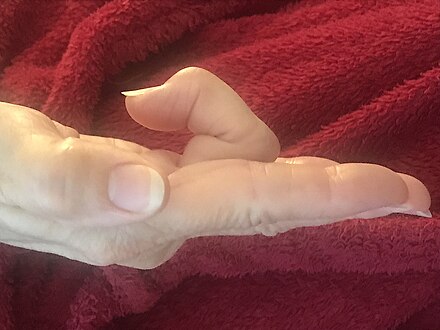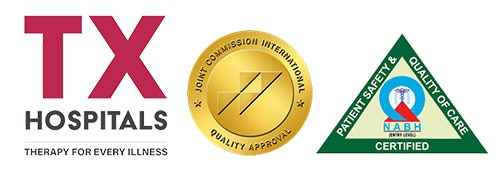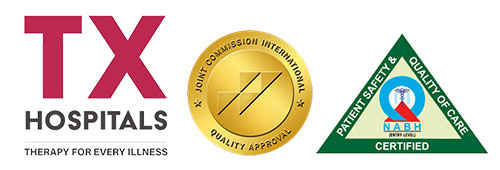Trigger Finger Surgery in Hyderabad


What is Trigger Finger Surgery?
Trigger finger surgery, also known as trigger finger release surgery, is a procedure performed to treat a condition called stenosing tenosynovitis or trigger finger. This condition causes one or more fingers to become stuck in a bent position, making it difficult to straighten them. During the surgery, the tight tunnel that surrounds the affected tendon is released, allowing the tendon to glide smoothly and reducing the catching or locking sensation.
Why is Trigger Finger Surgery Performed?
Trigger finger surgery is performed for several reasons, including:
- Alleviating symptoms: Trigger finger can cause pain, stiffness, and difficulty moving the affected finger(s). Surgery is performed to alleviate these symptoms and restore normal hand function.
- Restoring hand functionality: In severe cases of trigger finger, the finger(s) may become locked in a bent position, hindering daily activities. Trigger finger surgery helps restore the normal range of motion and functionality of the affected finger(s).
How to Prepare for Trigger Finger Surgery?
Preparing for trigger finger surgery involves a series of steps to ensure a safe and successful procedure. Here are some important aspects of the preparation process:
- Consultation and evaluation: You will have a consultation with a hand surgeon or orthopedic doctor at TX Hospitals who specializes in trigger finger treatment. They will evaluate your condition, discuss your symptoms and medical history, and explain the surgery in detail.
- Medical evaluation: Your healthcare team at TX Hospitals will conduct a thorough medical evaluation to assess your overall health and identify any pre-existing conditions that may impact the surgery. This evaluation may include blood tests, imaging scans, and consultations with other specialists if necessary.
- Pre-operative instructions: You will receive specific instructions on how to prepare for the surgery, including fasting guidelines and any necessary medication adjustments. It is important to follow these instructions carefully to ensure a smooth procedure.
More About Trigger Finger Surgery at TX Hospitals
At TX Hospitals, we take pride in our team of highly skilled hand surgeons and orthopedic doctors who specialize in trigger finger surgery. Our doctors have extensive experience in performing trigger finger release procedures and are supported by a dedicated team of healthcare professionals. We prioritize patient safety and comfort, utilizing advanced medical technologies and adhering to the highest standards of care.
Consequences of Delaying Trigger Finger Surgery
Delaying trigger finger surgery can have several consequences, including:
- Continued pain and discomfort: Trigger finger can cause ongoing pain, stiffness, and limited hand functionality. Delaying surgery prolongs the duration of these symptoms and can negatively impact your quality of life.
- Progression of the condition: Without timely treatment, trigger finger can worsen over time, leading to increased finger stiffness, difficulty in performing daily activities, and potential complications.
- Increased risk of complications: In some cases, trigger finger can lead to complications such as the development of a permanent contracture or the formation of nodules in the affected finger(s). Delaying surgery increases the risk of such complications and may require more extensive treatment in the future.
Don’t delay your treatment any further. Contact us at TX Hospitals to schedule a consultation with our esteemed hand surgeons and orthopedic doctors. We are committed to providing you with the highest quality care and guiding you towards optimal hand health and functionality. Learn more about trigger finger surgery and experience the best outcomes at TX Hospitals, the trusted destination for hand and wrist orthopedic care.
Frequently Asked Questions (FAQs)
The duration of trigger finger surgery typically ranges from 15 to 30 minutes. It is usually performed as an outpatient procedure, meaning you can go home the same day.
The common symptoms of trigger finger include finger stiffness, clicking or popping sensation when bending or straightening the finger, pain or tenderness at the base of the affected finger, and difficulty fully extending or flexing the finger.
Trigger finger surgery is usually performed under local anesthesia. The surgeon makes a small incision near the base of the affected finger and releases the constricted tendon sheath. In some cases, the surgeon may remove any thickened or inflamed tissue.
Trigger finger surgery is generally well-tolerated, and any discomfort during the procedure is minimized with local anesthesia. After the surgery, you may experience some pain, swelling, or tenderness in the operated finger, but it can be managed with pain medications and home remedies as prescribed by your doctor.
The recovery period after trigger finger surgery varies for each individual. Typically, you can resume light activities within a few days and return to normal daily activities within a week or two. Physical therapy or hand exercises may be recommended to aid in recovery and restore finger mobility.
Like any surgical procedure, trigger finger surgery carries some risks. Potential complications may include infection, bleeding, nerve injury, stiffness, or recurrence of trigger finger symptoms. However, these complications are rare, and your surgeon will take necessary precautions to minimize them.
In some cases, non-surgical treatments such as splinting, medication, or corticosteroid injections can provide relief from trigger finger symptoms. However, if conservative treatments fail to alleviate the condition, trigger finger surgery may be recommended to provide long-term relief.
Your surgeon will provide you with specific instructions on how to prepare for trigger finger surgery. This may include fasting before the procedure, stopping certain medications, and arranging for someone to accompany you to and from the hospital. It’s important to follow these instructions carefully to ensure a successful surgery.
Trigger finger surgery has a high success rate in relieving symptoms and restoring normal finger function. However, there is a small chance of recurrence or persistent symptoms in some cases. Your surgeon will discuss the expected outcomes and potential risks with you before the surgery.







